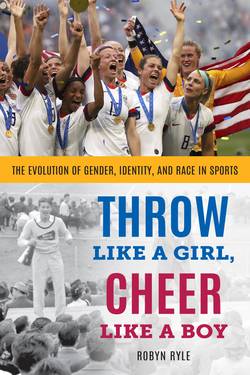Читать книгу Throw Like a Girl, Cheer Like a Boy - Robyn Ryle - Страница 24
На сайте Литреса книга снята с продажи.
The Truth about Hormones
ОглавлениеAfter Semenya’s humiliation in 2009, IAAF officials released an ambiguous statement clearing Semenya for further competition. Speculation that Semenya had elected to take medication to lower her testosterone levels was later confirmed. In the wake of the controversy over Semenya and Chand’s cases and the support they received from the public, many fellow athletes, physicians, politicians, and legal counsel, in 2011 the IAAF announced that it would abandon all language of “gender testing” and “gender verification.”[20] Instead, a test for hyperandrogenism (high testosterone) would be implemented, and only when the IAAF had “reasonable grounds for believing” that a woman may have the condition.[21] Though officials argued this test had nothing to do with gender, the criteria for what constituted “high testosterone” were based on what was defined as “within the male range.” In other words, women who had testosterone levels that were similar to testosterone levels in men would be barred from competition. There were two exceptions to this rule: women like Martínez-Patiño, whose bodies were unable to process testosterone; and women who took drugs in order to reduce their testosterone. Because Semenya’s tests revealed levels of testosterone that were above this limit, she was told she would have to take medication to lower those levels before she could compete in the 800 meter event.
Take a step back for a second to contemplate all the implications of this new policy. First, for all its fancy language, the test is still about gender. The “normal” reference range for men is defined as between 10 and 35 nanomoles of testosterone per liter. For women, the range is .35 to 2.0. So for the purposes of testing, a female athlete must have less than 10 nanomoles per liter. Even without using the language of “gender verification,” the test is based on a biological definition of what a woman is—this time hormonal instead of chromosomal.
Second, the policy forces women whose testosterone is above the limit to either be barred from competition or undergo medical intervention in order to compete. That is, women must medically alter their natural bodies in order to count as women. At the least interventionist end of the spectrum, this might involve taking drugs to suppress their naturally high testosterone levels. At the most extreme end of medical intervention, some women had their internal testes surgically removed, even though the organs posed no health risk. In at least four other cases, sports officials referred female athletes with hyperandrogenism to a French hospital where these procedures took place. The doctors also suggested the athletes have surgery to reduce the size of their clitoris, making them appear more gender “typical.” In other words, the new policy led to at least some female athletes surgically altering their bodies in order to be able to compete.
But perhaps the biggest flaw in the policy is that it is based on the assumption that a certain level of testosterone in these women’s bodies confers an unfair competitive advantage. If a woman has testosterone levels that are within the “male” range, she must be a better athlete than women with testosterone levels in the female range. But is that actually true?
